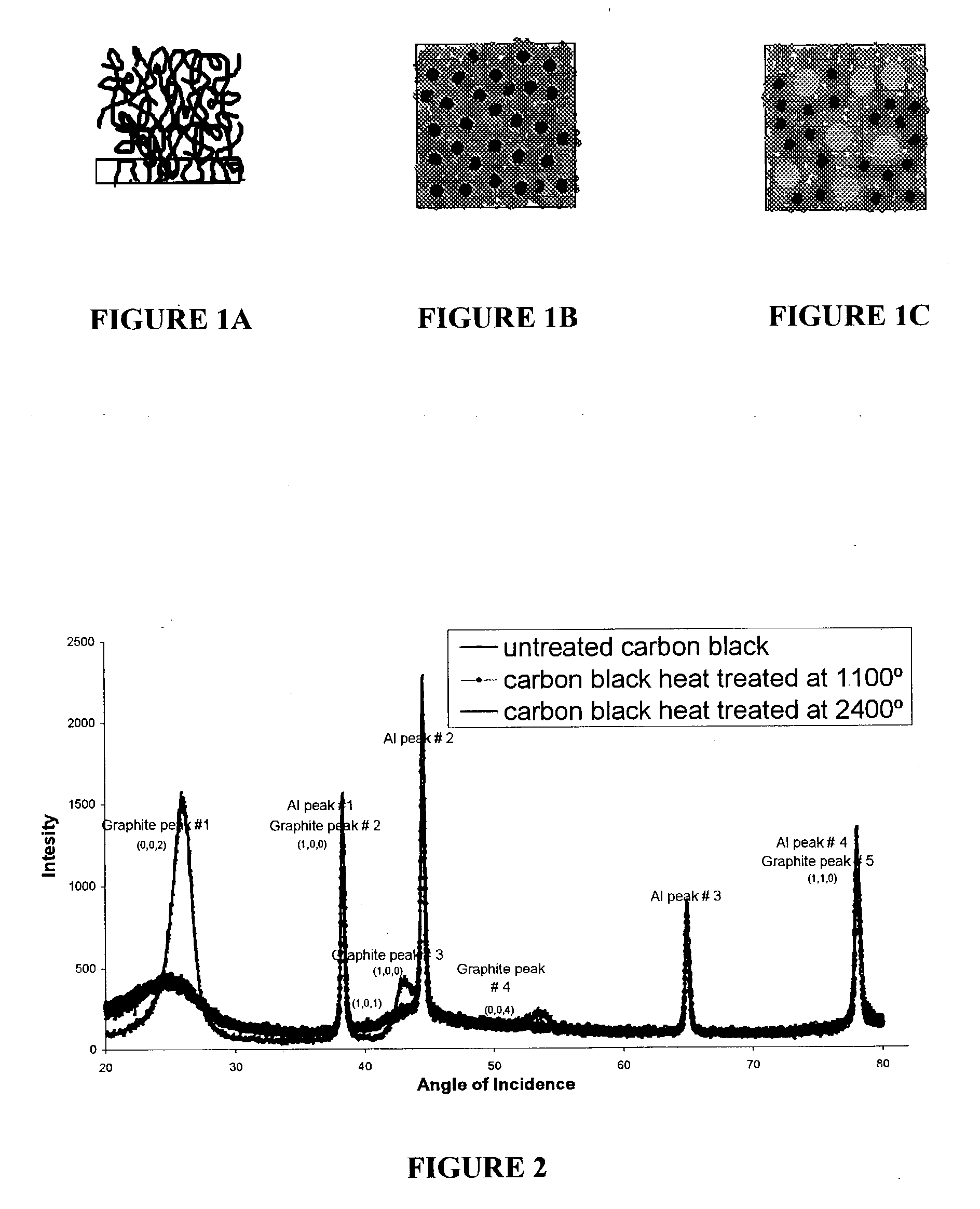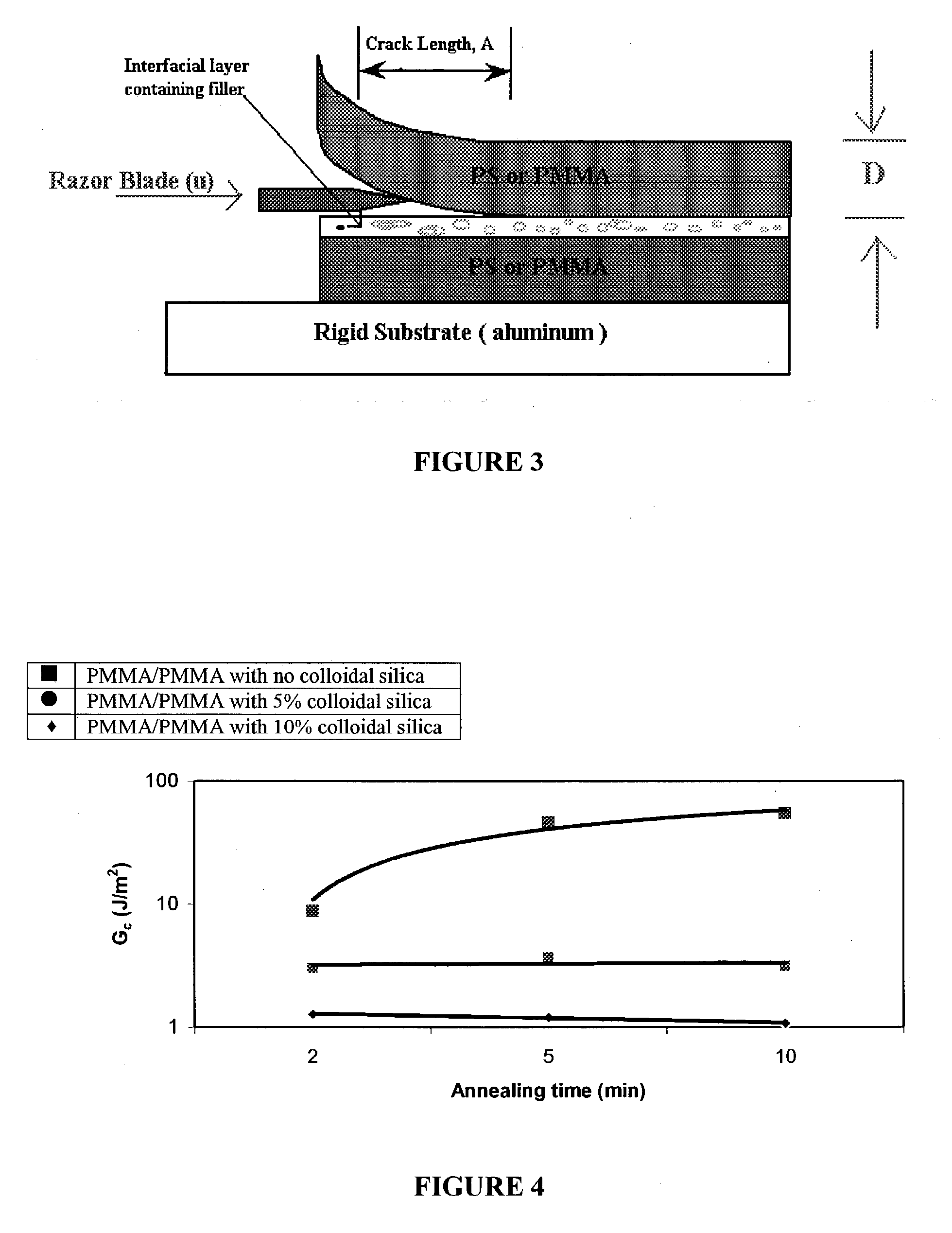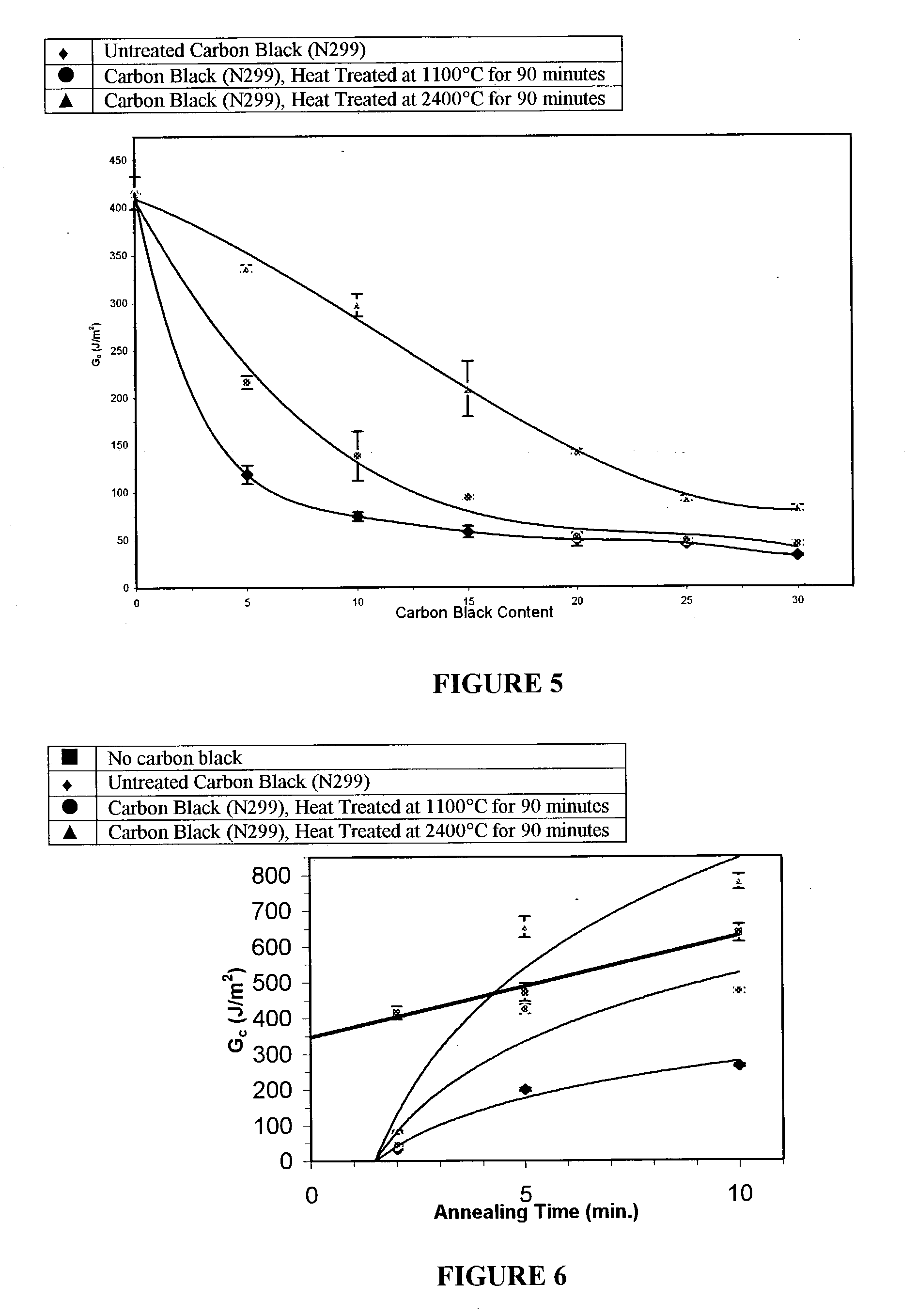Method for enhancing polymer adhesion using filler particle mix and compositions made using the method
a polymer and filler particle technology, applied in the field of enhancing polymer adhesion using filler particle mix and compositions made using the method, can solve the problems of catastrophic failure of multi-component polymer layers, significant reduction in their adhesion strength with other materials, and difficult multi-component structure us
- Summary
- Abstract
- Description
- Claims
- Application Information
AI Technical Summary
Problems solved by technology
Method used
Image
Examples
example 1
[0062] Suppression of Adhesion
[0063] The samples were prepared by first forming two slabs of polymethyl methacrylate (PMMA) for each sample. One set of samples was then formed by glazing the surface of one of the PMMA slabs with a thin film (approximately 1000 .ANG. thick) of polymethyl methacrylate with no colloidal silica. When the two slabs of PMMA were placed in contact with each other, the thin film of polymer acted as an adhesive layer. A second and third set of samples were prepared in a similar manner and 5% and 10% by weight colloidal silica, respectively, was added to the samples. The fracture toughness, G.sub.c, of the interfaces of each of the samples was then tested using the Asymmetric Double Cantilever Beam Method. The results are shown in FIG. 4.
[0064] In FIG. 4, the fracture toughness is plotted as a function of annealing time for the PMMA / PMMA interfaces. FIG. 4 shows that without silica, the fracture toughness increases with annealing time as expected. The additio...
example 2
Control Of Adhesion With Annealing Time
[0067] For this example, slabs of polystyrene (PS) were formed and PS / PS samples were prepared with a thin layer of polystyrene glazed onto the surface of one of the slabs. Three sets of samples were prepared; the first set had a glaze which contained untreated carbon black, the second and third sets of samples had glazes with carbon black treated at 1100.degree. C. and 2400.degree. C., respectively, for 90 minutes. The amount of carbon black in the samples varied in increments of 5% from 0% to 30% by weight for each of the three sets of samples. Each of the samples was annealed for 2 minutes. The fracture toughness, G.sub.c, was measured for each sample and the results are shown in FIG. 5.
[0068] FIG. 5 shows that the fracture toughness decreases drastically with carbon black content. The middle curve in FIG. 5 corresponds to the fracture toughness, G.sub.c, when the carbon black was heat treated to 1100.degree. C. FIG. 5 shows that the decreas...
example 3
[0069] For this example, four sets of PS / PS interface samples were prepared in a manner similar to Example 2. The glazes in the different sets of samples contained no carbon black and 30% by weight concentrations of untreated carbon black, carbon black treated at 1100.degree. C. for 90 minutes and carbon black heat treated at 2400.degree. C. for 90 minutes. The fracture toughness, G.sub.c, for each of the samples was measured for various annealing times between o and 10 minutes. The results are shown in FIG. 6.
[0070] FIG. 6 shows the fracture toughness, G.sub.c, of the PS / PS interface samples with no carbon black and different carbon blacks at a concentration of 30% by weight for varying annealing times. The flat curve in FIG. 6 is the fracture toughness of a bare PS / PS interface, i.e., an interface formed without a carbon black filler. FIG. 6 shows that the fracture toughness, G.sub.c, for all interfaces increases monotonically with time.
[0071] For the PS / PS interface samples conta...
PUM
| Property | Measurement | Unit |
|---|---|---|
| Percent by mass | aaaaa | aaaaa |
| Percent by mass | aaaaa | aaaaa |
| Percent by mass | aaaaa | aaaaa |
Abstract
Description
Claims
Application Information
 Login to View More
Login to View More - R&D
- Intellectual Property
- Life Sciences
- Materials
- Tech Scout
- Unparalleled Data Quality
- Higher Quality Content
- 60% Fewer Hallucinations
Browse by: Latest US Patents, China's latest patents, Technical Efficacy Thesaurus, Application Domain, Technology Topic, Popular Technical Reports.
© 2025 PatSnap. All rights reserved.Legal|Privacy policy|Modern Slavery Act Transparency Statement|Sitemap|About US| Contact US: help@patsnap.com



